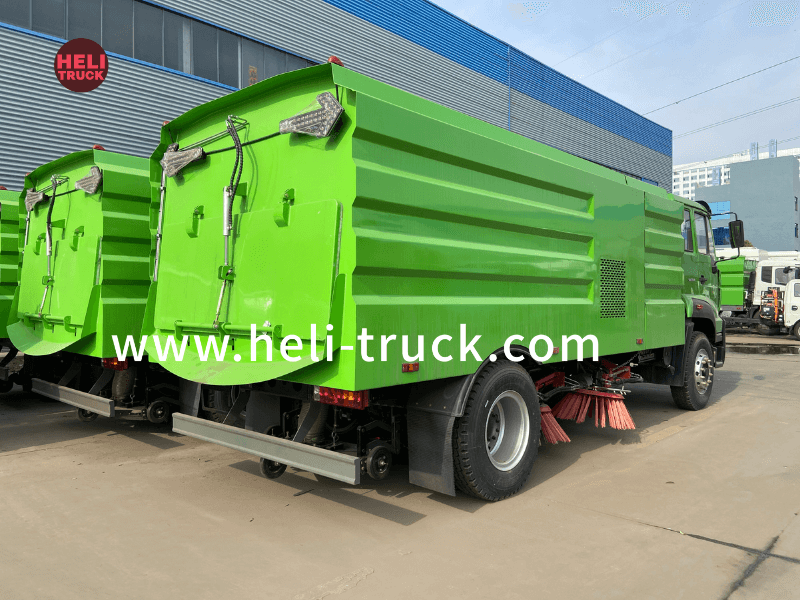Introduction
Water tank trucks play a crucial role in providing water supply to various communities, especially in areas facing water scarcity or during emergencies such as natural disasters. The coordination of water tank trucks is essential to ensure efficient resource management and effective delivery of water to those in need. This article discusses the importance of water tank truck water supply coordination and explores strategies to optimize this coordination for maximizing the impact of water supply efforts.

Importance of Water Tank Truck Water Supply Coordination
Water tank trucks are a vital resource for delivering clean water to areas where access to safe drinking water is limited. In many regions around the world, water tank trucks are used to provide water to remote villages, refugee camps, and disaster-stricken areas. The coordination of water tank trucks is crucial for several reasons:
1. Resource Optimization: Efficient coordination of water tank trucks helps in optimizing the use of available resources, such as fuel, manpower, and equipment. By coordinating the routes and schedules of water tank trucks, organizations can ensure that water is delivered to the maximum number of people in need.
2. https://www.heli-truck.com/729/ : Coordinating water tank trucks ensures timely delivery of water to communities. In emergency situations, such as droughts or natural disasters, timely delivery of water is critical for preventing dehydration and waterborne diseases.
3. Cost-Effectiveness: Proper coordination of water tank trucks helps in reducing operational costs by minimizing fuel consumption, reducing vehicle wear and tear, and streamlining logistical processes. This cost savings can be redirected towards providing more water to communities in need.
4. Improved Service Quality: Coordinated water supply efforts lead to improved service quality, as water tank trucks can reach remote areas and vulnerable populations more efficiently. This helps in ensuring that all individuals have access to clean and safe drinking water.
Optimizing Water Tank Truck Water Supply Coordination
To optimize water tank truck water supply coordination, organizations and agencies involved in water supply efforts can implement the following strategies:
1. Centralized Command Center: Establishing a centralized command center to monitor and coordinate water tank truck activities is essential for effective coordination. The command center can track the location of water tank trucks in real-time, assign routes based on priority areas, and communicate with drivers to ensure smooth operations.
2. Route Planning and Optimization: Utilizing geographic information systems (GIS) and route optimization software can help in planning efficient routes for water tank trucks. By considering factors such as traffic conditions, road accessibility, and water demand, organizations can optimize routes to maximize water delivery efficiency.
3. Collaboration and Communication: Effective communication among stakeholders, including water supply agencies, government authorities, and local communities, is key to successful water tank truck coordination. Regular coordination meetings, information sharing platforms, and clear communication channels can facilitate collaboration and enhance coordination efforts.
4. Data Collection and Analysis: Collecting data on water demand, consumption patterns, and population demographics can help in better planning and coordination of water tank trucks. Data analysis can identify areas with the highest water needs, forecast future demand, and optimize resource allocation for efficient water supply.
5. Emergency Response Planning: Developing contingency plans and emergency response protocols for water supply coordination is essential for addressing sudden spikes in water demand or unforeseen challenges. By having pre-established procedures in place, organizations can respond promptly to emergencies and ensure continuous water supply.
6. Training and Capacity Building: Providing training to water tank truck drivers, support staff, and coordination teams is crucial for enhancing coordination effectiveness. Training programs can cover topics such as safe driving practices, emergency response procedures, and communication protocols to ensure smooth operations.
Case Study: Water Tank Truck Coordination in Disaster Response
To illustrate the importance of water tank truck water supply coordination, let us consider a case study of water supply efforts during a natural disaster response:
Scenario: A severe earthquake has struck a remote region, causing widespread destruction and displacing thousands of residents. Access to clean water is limited, and water tank trucks are deployed to provide emergency water supply to affected communities.
Coordination Efforts: A centralized command center is established to monitor the movement of water tank trucks, assign routes to drivers, and communicate with on-ground teams. Route planning software is used to optimize the delivery routes based on real-time data on road conditions and water demand.
Collaboration and Communication: Regular coordination meetings are held with government agencies, relief organizations, and local community leaders to ensure alignment in water supply efforts. Information sharing platforms are set up to exchange critical updates and coordinate resources effectively.
Data Analysis: Data on water demand, population displacement, and infrastructure damage are collected and analyzed to identify areas with the highest water needs. This data-driven approach helps in prioritizing water delivery to vulnerable populations and optimizing resource allocation.
Emergency Response Planning: Contingency plans are developed to address potential challenges, such as road blockages, fuel shortages, or inclement weather. Emergency response protocols are communicated to all stakeholders to ensure a coordinated and swift response to unforeseen events.
Training and Capacity Building: Water tank truck drivers and support staff receive training on safe driving practices, emergency response procedures, and communication protocols. Capacity building efforts enhance the skills and readiness of personnel involved in water supply coordination.
Conclusion
Water tank truck water supply coordination is essential for optimizing resource management and ensuring efficient delivery of water to communities in need. By implementing strategies such as establishing a centralized command center, optimizing routes, fostering collaboration, collecting data, planning for emergencies, and providing training, organizations can enhance coordination efforts and maximize the impact of water supply initiatives. Effective coordination of water tank trucks is vital for addressing water scarcity, responding to emergencies, and improving access to clean and safe drinking water for vulnerable populations worldwide.
